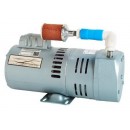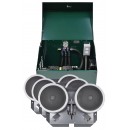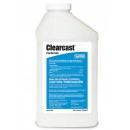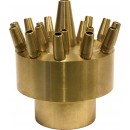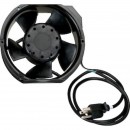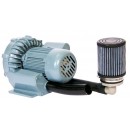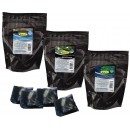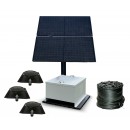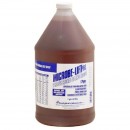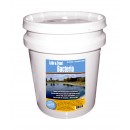Concentrated formula for cleaning and maintaining septic tanks, drain fields and ponds
Maintaining septic tanks in good working order is essential; keeping the septic drain field clean and eliminating blockages or buildups is a must.
Many rural homeowners and cottage owners are familiar with the septic tank and understand that regular preventative maintenance is often the best way to assure there are no problems which can lead to costly repairs and pumping as well as the potential for environmental damage.
Using natural microbial septic formulations is probably the best way to assure a trouble-free septic system.
This waste digesting bacteria works in anaerobic and aerobic conditions and will eliminate cooking wastes, fruit and vegetable waste, tissue and paper wastes, human wastes and feces.
The typical application rate septic tanks and drain fields is 4 ounces for 6,000 gallons; we recommend that in smaller tanks use two ounces for every 1,500 gallons of tank size. The typical septic tank usually holds between 1,000 and 2,000 gallons.
The septic bacteria formula comes in prepackaged soluble pouches each containing 2 ounces of bacteria.
The easiest way to get this beneficial bacteria into your septic tank or field is to flush a soluble pouch directly down the toilet. The bacteria pouch dissolves and the safe, natural bacteria enters the septic tank or field where it instantly begins to devour waste.
A monthly treatment will keep your tank operating at a high efficiency level which reduces pump-outs and will keep odors down and crusting and hard buildups from forming and fouling or block the tank.
Microbial Septic Formula: Amazon Septic Products
This product is dissolvable powdered formulation that contains a blend of six naturally occurring beneficial bacteria cultures. This is certified non-genetically modified and non-pathonogenic.
Eliminates: cooking wastes, fats, oils, grease. Eliminates fruit and vegetable wastes. Eliminates human waste. Eliminates paper and tissue waste materials. Reduces odors from septic fields, seepage fields, drainage fields and tanks. Eliminates septic leachate from ponds and basins. Assists in the removal of leachate, waste and sewage from ponds. Helps prevent septic system blockages and back-up and restores slow-flow drains to maximum capacity.
Cabin Obsession
Best Price on Amazon
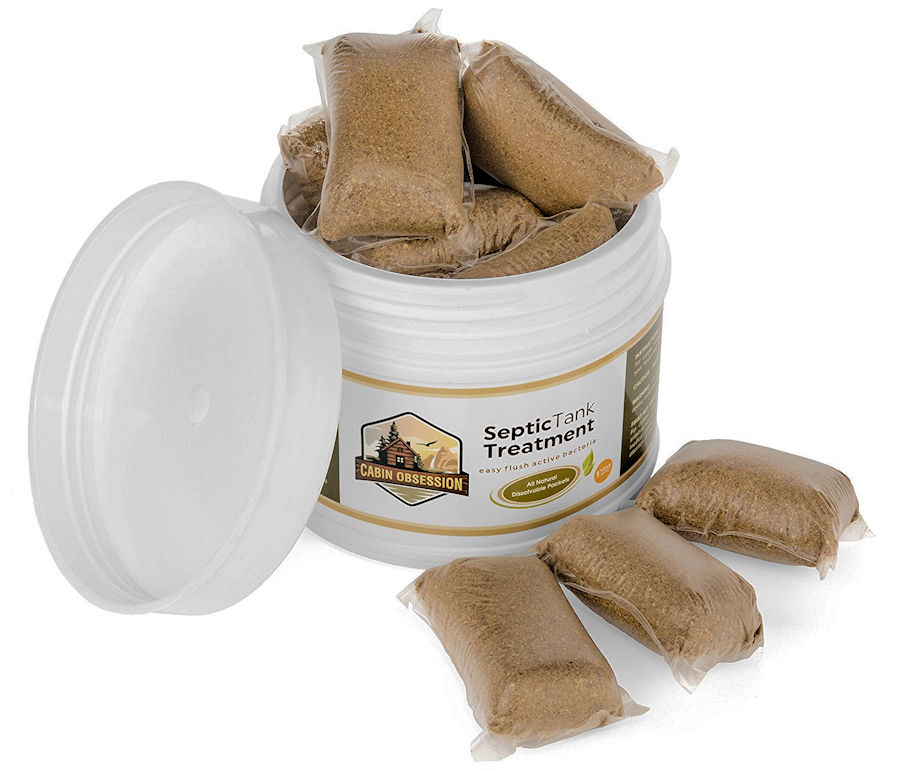 As affiliates we may receive payment for purchases made on Amazon.
As affiliates we may receive payment for purchases made on Amazon.
|
Our Selection of Septic Bacteria Products are now on Amazon

As an Amazon affiliate we may recieve payment for purchases made through Amazon.
Septic Tank Cleaning Bacteria
 Eliminates: cooking wastes, fats, oils, grease. Eliminates fruit and vegetable wastes. Eliminates human waste. Eliminates paper and tissue waste materials. Reduces odors from septic fields, seepage fields, drainage fields and tanks. Eliminates: cooking wastes, fats, oils, grease. Eliminates fruit and vegetable wastes. Eliminates human waste. Eliminates paper and tissue waste materials. Reduces odors from septic fields, seepage fields, drainage fields and tanks.
Eliminates septic leachate from ponds and basins. Assists in the removal of leachate, waste and sewage from ponds. Helps prevent septic system blockages and back-up and restores slow-flow drains to maximum capacity.
Application Rates: Add one pouch per month for septic tanks and septic fields. The 2 pound supply (12 x 2 ounces) typically treats a single household for one full year depending on size of septic system. Triple dosage on first application as a shock treatment to accelerate initial bacterial function.
For septic tank treatment: Flush one packet down the toilet. Repeat monthly. Troubled systems may require heavier initial application. For drain line treatment: Mix one packet with 1 gallon of water. Pour evenly down all drains. Repeat monthly.
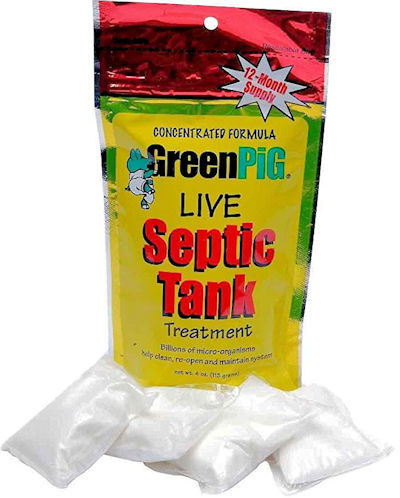 Green Pig Live Septic Tank Treatment Green Pig Live Septic Tank Treatment
Drainage failure is due to the gradual buildup of accumulated sludge.
Undigested raw sewage and grime can build up throughout your entire septic system including the tank, lines, cesspit, sand mound, leach field and drain field when the system is untreated or poorly maintained.
Due to the use of household cleaners and other common chemicals septic tank systems that have not been properly treated can have a difficult time digesting and degrading the raw septic sewage that enters the tank because of a decrease in beneficial septic tank bacteria.
GreenPig septic tank treatment is populated with one billion septic tank bacteria that quickly multiply to absorb and digest sludge, grease, paper and solid waste which may clog your septic, cesspit, leach field , drain field or and mound systems. Simply flush one solupak down the toilet once every three months, the packet will dissolve in your septic system. No mess, no fuss, no measuring, SIMPLE.
GreenPig is 7 strands of bacteria, over a billion per gram. The bacteria found in GreenPig have been specifically chosen to break down septic tank waste.
A colony of bacteria already exist in your septic system, GreenPig is adding more bacteria to break down waste to help avoid future problems such as clogged leach fields, pooling of water in the yard, and obnoxious odors.
Aids in the breakdown of septic waste to help avoid back up problems GreenPig septic tank bacteria keeps sewage flowing without restriction Treatment is populated with one billion septic tank bacteria that quickly multiply to absorb and digest sludge grease paper and solid waste Treats 500 1000 and 1500-Gallon tanks by simply flushing one solupak down the toilet once every three months
 RID-X Liquid Septic Tank Additive RID-X Liquid Septic Tank Additive
RID-X Septic System Treatment will give septic system homeowners peace of mind by helping maintain a free-flowing system.
This RID-X Septic System Treatment 6-Dose Liquid formula is scientifically formulated with special bacteria and enzymes to digest household waste.
By adding RID-X to the septic system every month, along with regular pumping, you can help prevent septic backups and prolong the life of your system.
This supply is enough for six months of treatment and can also be used to keep drain pipes running smoothly.
|
Application Rates
Septic Tanks - One 2oz pouch per 1,500 Gallons. Add one pouch per month for septic tanks and septic fields. The 2 pound supply (12 x 2 ounces) typically treats a single household for one full yea depending on size of septic system. Triple dosage on first application as a shock treatment to accelerate initial bacterial function.
For septic tank treatment: Flush one packet down the toilet. Repeat monthly. Troubled systems may require heavier initial application. For drain line treatment: Mix one packet with 1 gallon of water. Pour evenly down all drains. Repeat monthly.
Made only from all natural ingredients that are ecologically responsible and safe for people, fish and pets. It is our way of helping our customers more easily select the products that will help them keep their ponds clean and clear without compromising their belief in natural pond maintenance.
Ponds - Sixteen to thirty-two 2oz pouches per surface acre per week.
Add 16 to 32 pouches per surface acre per week depending on extent of problem. i.e.; for extreme cases of septic leaking or sewage odors increase dosage. Aeration added to pond will allow you to reduce by half the weekly dosage. Once the septic, sewage problem has been addressed then switch from the septic bacteria to the pond bacteria designed for the aquatic-eco system in a healthy, clean and unpolluted state.
**The septic formula bacteria has a 3-year shelf life. Store unused product in a cool dry place, keep from freezing.
This bacteria mixture can also be useful in ponds. Some ponds have the misfortune of having a problematic septic tank or field leak waste materials and leachate into the pond. Even small amounts of waste material running from a broken or non-working tank can enter the pond and cause odors and blooms of algae. The high levels of nutrients from oils, grease and human waste can quickly turn a pond into a foul smelly pit unfit for swimming or enjoying.
In most cases in ponds we recommend the natural pond bacteria which removes unwanted nutrients from ponds; when sewage material is involved it is recommended to use this septic formula to restore the pond and help repair the septic system.
The application rate for ponds is not the same as in tanks; in ponds add 32 - 64 ounces per week per acre. This means adding 16 to 32 two-ounce packages into the pond per week per surface acre. You should also add the bacteria into your septic tank as well at the rate of 2 ounces (1 pouch) every month to ensure the sewage in the tank is properly conditioned so that similar problems of leakage or contamination of the pond don't happen regularly. Once the problem has been resolved continue treating the septic tank and to keep nutrients down use the standard pond bacteria formula, saving the septic bacteria for emergencies or for regular tank care.
As we've mentioned many times before it will also be extremely beneficial to add aeration to any pond that has odors, or has been contaminated by sewage or waste materials. A small air pump with a single diffuser in even a large pond can help with the restoration after a waste spill or leakage problem from a septic system.
Solving Septic Tank Problems
A septic tank is a key component of the septic system, a system of sewage treatment in small-scale communal areas unrelated to the main sewer lines provided by local governments or private companies. (Other factors, generally binding and / or restricted by local governments, may include pumps, alarms, sand filters, and liquid effluent disposal means outlined the scope of a septic tank, the ponds, natural stone plant fiber filter or peat moss beds.) Septic systems are a type of On-Site Sewage Facility (FHO). In North America approximately 25% of the population relies on septic tanks, which can include suburbs and small towns and rural areas (Indianapolis is an example of a large city where many neighborhoods in the city are still separated from septic tanks).
In Europe, they are generally limited to rural areas only. The term "septic" refers to the anaerobic bacterial environment that develops in the tank and which decomposes or mineralized waste discharged into the tank. Septic tanks can be coupled with other units on site wastewater treatment such as biofilters or aerobic systems involving artificial forced aeration.
Periodic preventive maintenance is necessary to remove the irreducible solids which settle and gradually fill the tank, which reduces its effectiveness. In most jurisdictions this maintenance is required by law, but often not enforced. Those who ignore the requirement will eventually be faced with costly repairs when solids escape the tank and destroy the clarified liquid effluent disposal means. A properly maintained system, on the other hand, can last for decades and perhaps a lifetime.
A septic system generally consists of a reservoir (or sometimes more than one tank) between 4000-7500 liters (1,000 and 2,000 gallons) in size connected to a sewage pipe entrance at one end and a field drain septic tank to another. These pipe fittings are usually made through a tube T which allows the entry and exit of liquid without disturbing any crust on the surface.
Today, the design of the tank usually has two bedrooms (each has a manhole cover) which are separated by a separation wall which has openings located halfway between the floor and roof of the tank. Wastewater from the first chamber of the tank, allowing solids to settle and residual float. The solids are established anaerobic digestion, reducing the volume of solids. The liquid component flows through the separation wall in the second chamber where further settlement takes place with the excess liquid, then drain in a relatively clear decision in the drainfield, also called field leakage or seepage field, depending on locality.
The remaining impurities are trapped and disposed of in soil with excess water removed by percolation into the ground (before returning to ground water) by evaporation , and absorption through the root system of plants and transpiration possible. A network of pipelines, often set in a stone filled trench (see weeping tile), distributes the wastewater into the field with several drainage holes in the network. The size of the septic field is proportional to the volume of wastewater and inversely proportional to the porosity of the drainage field. The entire septic system can operate by gravity alone, or where topographic considerations require, with the inclusion of a lift pump. Some models include septic tank traps or other methods to increase the volume and velocity of flow in the drainage field.
This will load all the parts of the drainage pipe more evenly and extends the life of the field drainage by preventing premature clogging. An Imhoff tank is a two-tier system where septage is digested in a separate tank. This avoids mixing digested sludge with incoming sewage. In addition, some models of septic tanks have a second stage when the anaerobic effluent from the first stage is aerated before it empties into the area of infiltration. Waste that is not decomposed by the anaerobic digestion eventually be removed from the septic tank or septic tank fills up and discharges of untreated wastewater directly decomposed into the drainage field.
Not only is it bad for the environment, but if the sludge from the septic tank overflowing into the drainfield, it can clog the drainfield pipe or decrease the porosity of the soil itself, requiring repairs expensive. How often the septic tank must be emptied depends on the volume of the tank relative to the entry of solids, and indigestible solids at room temperature (such as anaerobic digestion is more efficient at high temperatures).
The frequency required varies considerably depending on the jurisdiction, the use and characteristics of the system. Some health authorities require tanks to be emptied at prescribed intervals, while others allow the determination of the inspector. Some pumping systems need a few years or sooner, while others may be able to go 10-20 years between pumping.
Contrary to what many think, there is no "rule of thumb" for how often tanks should be emptied. An older system with a small reservoir that is used by a large family, will require much more frequent pumping of a new system used by few people. Anaerobic decomposition is restarted quickly when the tank is refilled. A properly designed and normally operating septic system is odor free and besides the periodic inspection and pumping of the septic system should last for decades without maintenance. A well designed and maintained concrete, fiberglass or plastic tank should last about 50 years.
Cabin Obsession Treatment Available At Amazon Septic Tank Treatment
These monthly easy flush dissolving packets are specially formulated to help break down waste and maintain a properly functioning septic system. This is the easiest and most efficient way to prevent expensive septic tank backups and drain field repairs. Just flush one packet down your toilet each month.
Each packet contains billions of active bacteria cultures that are scientifically selected to produce, activate, and recharge the enzymes needed to reduce solids and decompose the different types of waste found in both the sludge layer and scum layer of your septic tank, and even out into the leach field.
Each flushable septic treatment packet is all natural, with no chemical additives. They’re safe for all home plumbing lines, and any black water system or cesspool, so flush each packet down your toilet with absolute confidence!
Not only is this the best way to maintain a healthy residential septic system, but our concentrated formula dissolvable enzyme pouches are also ideal for use in marine holding tanks and camper toilets too! And because of the advanced digestion rate of odor causing bio organic wastes, they aid in controlling and getting rid of bad smells too.
Cabin Obsession Septic Bacteria
Best Price on Amazon
As affiliates we may receive payment for purchases made on Amazon.

Potential Problems With Septic Tanks Solved With Septic Bacteria
• Excessive dumping of cooking oils and grease can cause the inlet drains to block. Oils and grease are often difficult to degrade and can cause odor problems and difficulties with the periodic emptying.
• Flushing non-biodegradable items such as cigarette butts and hygiene products such as sanitary towels and cotton buds will rapidly fill or clog a septic tank; these materials should not be disposed of in this way.
• The use of garbage disposers for disposal of waste food can cause a rapid overload of the system and early failure.
• Certain chemicals may damage the working of a septic tank, especially pesticides, herbicides, materials with high concentrations of bleach or caustic soda (lye) or any other inorganic materials such as paints or solvents.
• Roots from trees and shrubbery growing above the tank or the drain field may clog and/or rupture them.
• Playgrounds and storage buildings may cause damage to a tank and the drainage field. In addition, covering the drainage field with an impervious surface, such as a driveway or parking area, will seriously affect its efficiency and possibly damage the tank and absorption system.
• Excessive water entering the system will overload it and cause it to fail. Checking for plumbing leaks and practicing water conservation will help the system's operation.
• Over time biofilms develop on the pipes of the drainage field which can lead to blockage. Such a failure can be referred to as "Biomat failure".
• Septic tanks by themselves are ineffective at removing nitrogen compounds that can potentially cause algal blooms in receiving waters; this can be remedied by using a nitrogen-reducing technology, or by simply ensuring that the leach field is properly sited to prevent direct entry of effluent into bodies of water.
|







 RID-X Liquid Septic Tank Additive
RID-X Liquid Septic Tank Additive